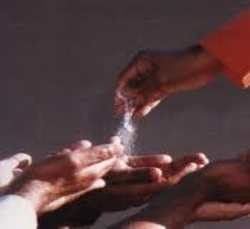In Addition
Vol 14 Τεύχος 3
May / June 2023
1. Health article
Relish all tastes; Let not Sugar & Salt rule our diet!
“There must be a balanced equilibrium in the stomach of man of various tastes --- sweet, bitter, salt, acid, sour, acrid, hot, etc. If the balance is upset, by the predominance of any one taste, health suffers a downfall…Food has to be tasty. So, we add a pinch of salt or a little bit of chilli or some other seasoning. In this manner we increase the negative aspects of food. Eliminate items which are excessively salty, sour, or pungent; these will develop hatred, envy, and so forth. The main cause of cancer is white sugar; in the refining of sugar a lot of chemicals are added. One of these processing chemicals is bone char.”…Sathya Sai Baba1,2
Prelude: We have covered the pros and cons of milk, one of the five white foods to avoid, in the last issue (vol 14 #2). In this article we deal primarily with two more whites, sugar and salt, widely consumed every day, more for taste than health!
1. Fundamental tastes in Nature
A sense of taste is vital. Our tastebuds can identify tastes, unlock the nutritive value of foods, and stimulate the digestive fire to kickstart the digestive process. Studies indicate that taste receptors are not confined to the tongue, and are found throughout the stomach, intestine and pancreas, airways, and in other systems too.3,4
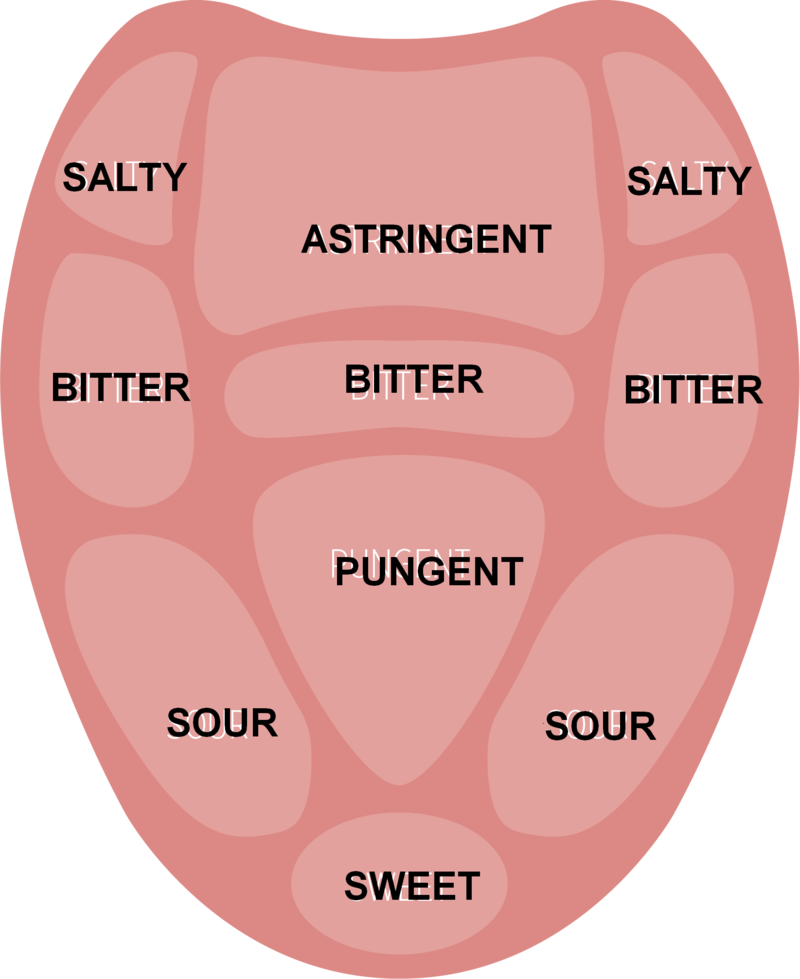
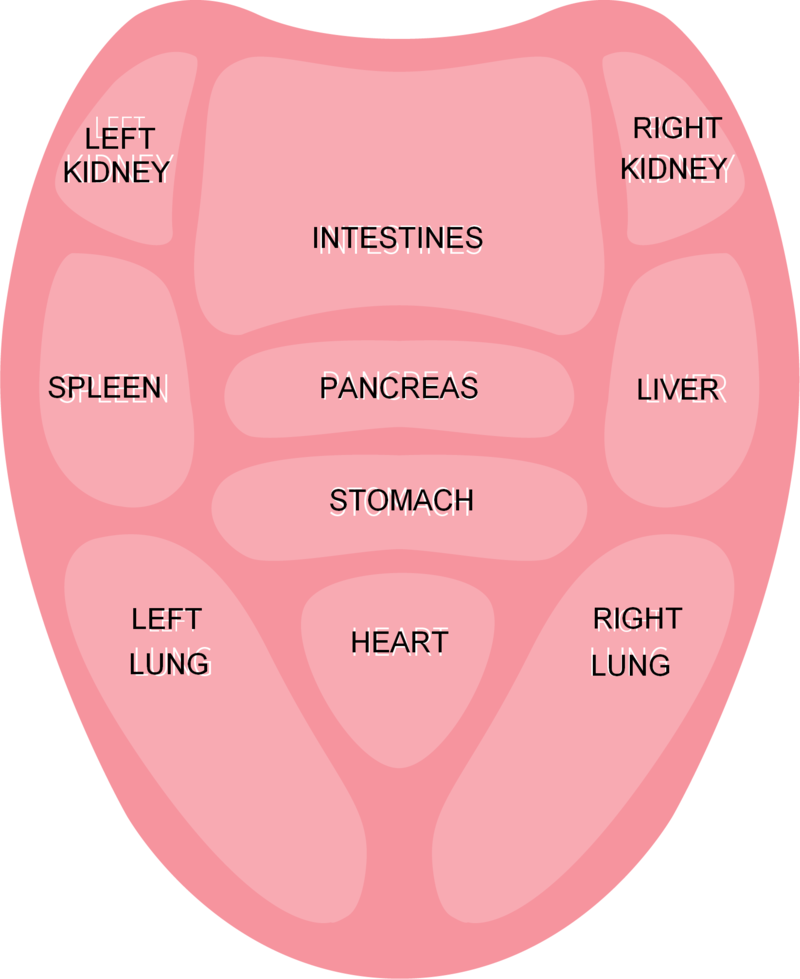
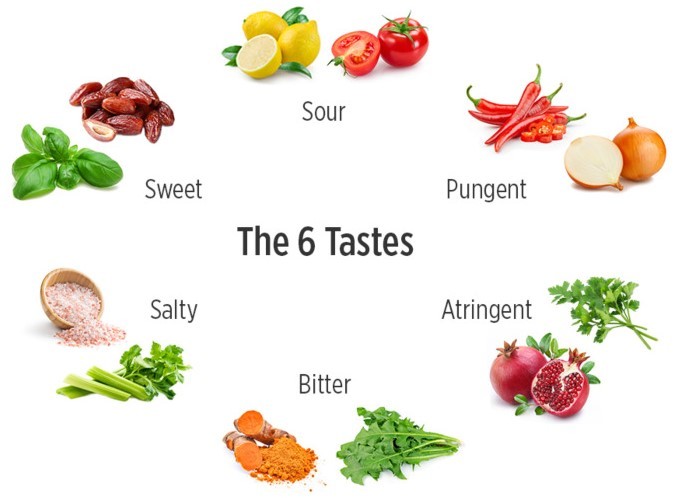
According to Ayurveda, taste is of six kinds: sweet, sour, salty, bitter, pungent, and astringent. Each taste has a vital role in our physiology and health and is linked in a pattern with the five elements of universe - earth, water, fire, air, and ether (space). Sweet is linked with earth and water, sour with earth and fire, salt with water and fire; pungent is linked with fire and air, bitter with air and ether, and astringent with air and earth.3,5
2. Sweet taste and health
2.1 What is sweet? Sweet is the taste of sugars. It can be found in many carbohydrates, fats, and proteins. Foods that illustrate the sweet taste are fruits like banana, mango, melons, cantaloupe, dates, figs, prunes; vegetables - beet, carrot, cucumber, olives, sweet potato; grains - corn, rice, wheat; legumes - mung beans, red lentils, urad dal; nuts and seeds - almonds, cashew, coconut, pumpkin seeds; dairy – milk and milk products; spices and flavourings - basil, bay leaf, caraway, cardamom, cinnamon, coriander, fennel, mint, nutmeg, saffron, vanilla, tarragon; and sweeteners like fruit juice, honey, molasses, and maple syrup which contain natural sugar.6
2.2 Benefits of sweet taste: It strengthens the mucus membranes of the body and lends a sustained cooling effect, builds tissues, energises and soothes the body and the mind, enhances immunity, clarity and awareness at a spiritual level. Sweet is a healthy choice if it is from natural sources, not from add-ons.6
Caution: Sweet is addictively pleasant, one tends to overindulge leading to unhealthy cravings and greed; in excess it extinguishes the digestive fire, diminishes appetite, makes one lazy, drowsy, and sleepy, and can worsen the toxicity in the body.6
2.3 What is sugar?
Sugar (common name for Sucrose) is a sweet crystalline substance obtained mostly from sugar cane and sugar beet; also, from sugar maple tree, coconut, and date palm; it includes molasses, a by-product of sugar produced during the refining process. Sucrose consists of 50% glucose and 50% fructose. Glucose is metabolised by nearly every cell of the body whereas fructose, almost entirely in the liver. The different types of sugars available are white refined, unrefined, unprocessed raw cane, organic, and brown sugar in granulated, powdered, or superfine forms.7-10
White sugar is refined sugar, chemically treated to bring out whiteness in colour. Bone char, often referred to as natural carbon, is widely used by the sugar industry as a 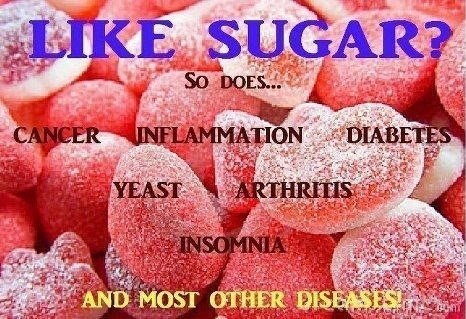 decolorising filter to get the desirable white colour in sugar. Even brown sugar is said to be created by adding molasses to refined sugar. Supermarket brands of sugar may be from different refineries making it impossible to know whether it has been filtered with bone char. Some sugars such as organic, unrefined brown sugar, sucanat (sugar cane natural) and turbinado (partially refined sugar) are not filtered with bone char; also beet sugar, though normally refined, does not involve the use of bone char.11-14
decolorising filter to get the desirable white colour in sugar. Even brown sugar is said to be created by adding molasses to refined sugar. Supermarket brands of sugar may be from different refineries making it impossible to know whether it has been filtered with bone char. Some sugars such as organic, unrefined brown sugar, sucanat (sugar cane natural) and turbinado (partially refined sugar) are not filtered with bone char; also beet sugar, though normally refined, does not involve the use of bone char.11-14
White sugar is known to cause leaky gut, skin problems such as acne, increase cellular aging, drain energy, negatively impact dental health, accelerate joint pains and cognitive decline, and increase the risk of cancer.15-17
Added sugar increases the flavour and shelf life of processed foods like ice cream, candy, bakery products, breakfast cereals, canned or packaged fruit juices, sweet tea, and condiments like ketchup. They are known to cause high blood sugar, insulin resistance, metabolic syndrome, fatty liver, increased triglycerides, obesity, and type-2 diabetes; also considered as one of the greatest threats to cardiovascular disease.8,15-20
2.4 Sugar substitutes: They do not contain sugar but taste sweet and fall into three categories – artificial sweeteners, sugar alcohols, and novel sweeteners.19
Artificial sweeteners are non-nutritive and created from chemicals in a lab, though some are made from natural substances like herbs; they are 200 to 700 times sweeter than sugar. Examples are saccharin, sucralose, acesulfame potassium (Ace-K), advantame, aspartame, neotame. Regulated by food and drug administration authorities, they may be considered safe within their recommended daily intake. They are being studied for their potential side effects on health.19
Sugar alcohols are created synthetically from sugars and are used in many processed foods, like chewing gum and hard candies, though not as sweet as artificial sweeteners. They can cause gastrointestinal irritation like bloating, gas, or diarrhoea. They are normally listed in ‘nutrition facts’ on labels eg, erythritol, isomalt, lactitol, maltitol, sorbitol, xylitol.19
Novel sweeteners are derived from natural sources. These “plant-derived noncaloric sweeteners” are considered safe by experts. Examples include allulose, monk fruit, stevia, tagatose.19
2.5 Natural sugar: It is best to eliminate highly refined or processed foods and beverages with added sugar and artificial sweeteners. Instead, depend on naturally healthy sugar:20-23
Jaggery is unrefined sugar made from palm or cane juice, containing a significant amount of molasses, hence considered a healthier option. In limited quantity, it can boost overall health. Rich in iron and as blood purifier it can handle the fluctuating hormonal levels in women and help relax; can give relief from migraine, bloating, and cough when taken with warm water. Choose dark brown jaggery, not white or pale brown usually treated with chemicals. When taken in excess or over a long period, it can increase blood sugar level and result in intestinal worm infestation.20-22
Honey is composed primarily of water, pollen, minerals, and simple sugars - glucose 30% and fructose 40%. Chemically very close to blood, it is a natural substitute for sugar, and best consumed raw or in tepid water with some lemon to prevent anaemia. It is ideal to relieve excess mucus and asthma and keep mind alert, also good for heart, brain, skin, and in wound healing. Never put honey in hot water, nor should it be heated, it will turn poisonous. Ayurveda says warm honey is toxic; can be a slow poison. Never give to children under the age of one.22,23
Caution: Say NO to sugar as part of everyday diet. Body recognises only sugar and not its origin. All sugars contain the same amount of calories and so will have the same impact on the body. Basically body does not need added sugar. So, if one must take sugar, having less is always better. But, do not be overzealous, lest one should start craving and binge on other comfort foods high in starch, saturated fat, and sodium. Wean yourself off sugar gradually and steadily. Look for healthier options to sweeten life with fruits, vegetables, and nuts or other flavours! Do read the nutrition facts on labels of packaged foods.15-17,19,24
3. Salt and health
3.1 What is salt? It is a white crystalline substance found in natural salts (sea and rock salt) and sea vegetables; it gives sea water its characteristic taste. Salt is used for seasoning, flavouring, and preserving food; also widely used in chemical industry. Known as sodium chloride (NaCl) it has 40% sodium and 60% chloride.3,5,25
3.2 Optimum salt is vital for survival as it is our primary source of the mineral sodium, essential for electrolytes and fluid balance, nerve health, nutrient absorption, muscle function, and regulating blood pressure. It lubricates tissues, improves taste, stimulates digestion, and helps in elimination of wastes. It is often fortified with iodine, iron, folic acid, or a combination of these to prevent diseases. In ancient times salt had immense economic and political power; taxation of salt inflicted revolutions and wars. With passage of time the precious salt became easily available; now it is regarded as a threat to health as it is present in almost everything we eat or drink resulting in its overconsumption.3,5,25,26
3.3 Minimum prescribed intake: Human body needs per day, a total of only 500 mg of sodium (1.25g of salt) to function properly under normal circumstances. American Heart Association recommends not more than 2300 mg of sodium a day. Considering the prevalence of hypertension, Indian Council of Medical Research recommends 2000 mg whereas many experts suggest 1500 mg especially for the aged and those with health issues. Those who sweat a lot or do physical labour need not go below the recommended intake. Both inadequate sodium and excess can cause health problems.3,5,25,27-31
3.4 Having too little salt may lead to low blood pressure, dehydration, elevated blood fat levels, and low sodium levels impairing mental status, seizures, water on the brain, coma, and death. Early symptoms of low blood sodium are intense thirst, mouth dryness, headache, confusion, drowsiness, dizziness, fainting, and blurred vision. However, a big majority of population consumes too much salt since it is hidden in many common foods that we all consume daily. If a food label lists sodium in content, multiply the figure by 2.5 for an accurate picture of the salt content. 25,30,31
3.5 Having excessive salt runs the risk of heart disease, hypertension, kidney dysfunction, osteoporosis, and stomach cancer. Short-term complications are water retention leading to swelling, bloating, lethargy, weakness, high blood pressure, headache, dehydration and excessive thirst.25,27,30
3.6 Opt for rock salt: Avoid highly processed refined white salt or table salt which is chemically treated and bleached to get the white colour. Instead use rock salt - purest form of salt in existence, e.g. pink Himalayan salt. Though nutritionally they may be similar, unrefined salt will be free of toxicity. Avoid sprinkling salt over your food. Instead use fresh herbs, spices, lemon juice etc. If one is in good health and eats a balanced diet, no need to worry about salt intake.30-33
Caution: Those with health issues should consult their physician. Take care that invisible consumption through salted snacks, processed foods, or restaurant meals should not exceed the recommended limit. If you had a high salt meal, offset it by drinking more water and having fruits rich in potassium. Ensure iodine intake is optimal too.30,32,33
3.7 Other uses of salt are cleaning and removing odours, extinguishing fires and melting ice, exfoliating skin and relieving sore throats, speeding up cooking times, and sanitising mouth and whitening the teeth. It can give relief from bug bites and also get rid of ants, weeds, snails, and slugs.26
4. Sour, bitter, pungent & astringent tastes
4.1 The sour taste is found in citrus fruits, lemon, tomato, sour milk products (yogurt), and fermented substances (vinegar, pickles). It stimulates digestion, cleanses and nourishes the tissues, energises the body, strengthens the heart, sharpens the senses, and helps extract minerals such as iron from food.3,5
4.2 Bitter taste is found in green leafy vegetables, eggplant, herbs and spices (turmeric, fenugreek, sesame seeds), beverages (tea, coffee), and some fruits (grapefruits, olives). It stimulates the appetite, helps bring out the flavour of other tastes, is a powerful detoxifying agent, and has antibacterial, anti-parasitic, and antiseptic qualities.3,5
4.3 Pungent taste, hottest of all, is found in certain vegetables (chilli peppers, garlic, onions) and spices (black pepper, ginger). It enhances other flavours, stimulates digestion and metabolism, clears the sinuses, cleanses the mouth, promotes sweating and detoxification, dispels gas, and relieves muscle pain.3,5
4.4 Astringent taste, least common, with a unique effect on the tongue, is found in legumes (beans, lentils), fruits (apple, cranberries, pomegranate, pear, dried fruit), vegetables (broccoli, cauliflower, asparagus, turnip), grains (rye, buckwheat, quinoa), beverages, and some spices and herbs (turmeric, parsley, marjoram). It is not as cold as bitter taste but has a greater cooling effect than sweet taste, absorbs moisture, cleanses the mucus membranes, tightens tissues, dries up the fats, and helps to eliminate of bodily wastes.3,5
5. Tips to balance the tastes
Include and enjoy all the 6 tastes in balance at each meal to get the required energy from food and to avoid food cravings and overconsumption. Traditionally cooked food takes care of sweet, salty, and pungent tastes; add a dash of lemon to fresh salads with some herbs and greens to cover the sour, bitter, and astringent tastes. One or two helpings of fresh fruits before meals and a handful of nuts or seeds during the day or with any meal will top up the diet. Rotate the various fruits, vegetables, herbs, and spices to cover all the tastes. Allow your body constitution to decide from its innate intelligence and natural inclination towards the right proportion of each taste. May be our taste buds will thank us and the body will exude gratitude through healthy digestion! Gradually minimise or eliminate foods that can sabotage taste buds, this will enable them to choose and relish healthy food which in turn can change the taste buds for better! Remember the popular adage: “the dose makes the poison” (Latin: dosis sola facit venenum).34,35
References and Links
- Sathya Sai Speaks on “The sour and the sweet”, 11 March 1968: www.sssbpt.info/ssspeaks/volume08/sss08-10.pdf
- Sathya Sai Speaks on Food and Character and refined sugar, 25 July 1983 and 8 October 1983, Sathya Sai Newsletter, USA, vol. 8-1 & 4; Source: Sathya Sai Baba Speaks on Food, Sri Sathya Sai Sadhana Trust publication, page 35 & 64.
- The Six Tastes of Food: Sweet, Sour, Salty, Bitter, Pungent, Astringent (eattasteheal.com)
- Taste receptors in the human body: https://www.nature.com/articles/486S7a
- The Six Tastes in Ayurveda | Banyan Botanicals
- Sweet Taste | Banyan Botanicals
- Sugar: https://www.brittanica.com/science/sugar-chemical-compound
- Composition of sugar: https://www.health.harvard.edu/blog/are-certain-types-of-sugars-healthier-than-others-2019052916699
- Types of Sugar: 56 Common Ones You Should Know (healthline.com)
- Brown Sugar vs. White Sugar: What’s the Difference? (healthline.com)
- Are animal ingredients included in white sugar? | PETA
- Is it True that Sugar is Processed with Bone Char? (loveveganliving.com)
- Sucanat: Nutrition, Benefits, Downsides, and How to Use (healthline.com)
- What Is Turbinado Sugar? Nutrition, Uses, and Substitutes (healthline.com)
- Is sugar bad? https://draxe.com/nutrition/is-sugar-bad-for-you/
- The sweet danger of sugar - Harvard Health
- 11 Reasons Why Too Much Sugar Is Bad for You (healthline.com)
- 5 Inflammation Causing Foods – Cleveland Clinic
- Facts About Sugar and Sugar Substitutes | Johns Hopkins Medicine
- What is Jaggery and What Benefits Does it Have? (healthline.com)
- Jaggery Benefits And Its Side Effects | Lybrate
- 4 Foods to Avoid for a Healthy Lifestyle (sadhguru.org)
- Honey vs. sugar: Differences, benefits, and disadvantages (medicalnewstoday.com)
- No sugar diet Tips: https://www.healthline.com/health/food-nutrition/no-sugar-diet
- Salt: Is It Healthy or Unhealthy? (healthline.com)
- Salt In Ancient Times (Fascinating Uses Through History) (foodhow.com)
- Required daily intake of sodium: Why Salt Is Bad For Your Heart (cardiovascularinstitute.com)
- How much sodium should I eat per day? | American Heart Association
- Nutrient requirements for Indians – ICMR-NIN, 2020 - Metabolic Health Digest
- How much salt is too much? (medicalnewstoday.com)
- https://www.healthifyme.com/blog/sources-of -sodium-in-food/
- Healthy Salt Substitute Alternatives vs. Unhealthy Options - Dr. Axe (draxe.com)
- Pink Himalayan Salt Benefits: Better Than Regular Salt? - Dr. Axe (draxe.com)
- Balance the tastes: Why Every Meal Should Have All 6 Tastes | Banyan Botanicals
- https://www.chemicalsafetyfacts.org/health-and-safety-/the-dose-makes--the -poison/
2. Face-to-Face Practitioners’ Meet, France 21 March 2023
In an atmosphere charged with excitement, nine practitioners from France and Romania met near Paris in the home of Practitioner 03578 who had just returned from Prashanti Nilayam with his 108CC Box freshly charged from the Master Box. It was their first face to face meeting since the pandemic. The French coordinator had asked them to come prepared with any questions and queries they might have. Dr Aggarwal was delighted to be present at the meeting virtually and to clear their doubts and answer their questions, some of which have been included in the Answer Corner. The practitioners were filled with enthusiasm and were happy that they had now recharged their boxes after a long wait.

3. AVP workshop: virtual 1-21 April followed by face-to-face at Puttaparthi 26-28 April 2023
After qualifying as AVPs, seven participants from India took their oath on 27 April and were entrusted with the 108CC box during the face-to-face workshop in Puttaparthi. A recently qualified Practitioner11632, with a keen desire to refresh her knowledge, also attended and was of great assistance to the teaching team. Dr Aggarwal in his valedictory address enlightened the participants on the birth of 108CC Box and how the Lord blessed it. He also shared some of his experiences with patients, which taught him life lessons, e.g. not to expect quick results even though vibrionics remedies are very powerful and can work very fast, recognise one’s thoughts and correct them whenever negativity or doubt creeps in, connecting to Swami with a sense of surrender while remaining aware of the tricks mind can play and the ego which can stealthily enter, and taking a flexible approach when patients are not receptive to taking the remedy in water, as patients’ thoughts are very important in bringing about a cure.
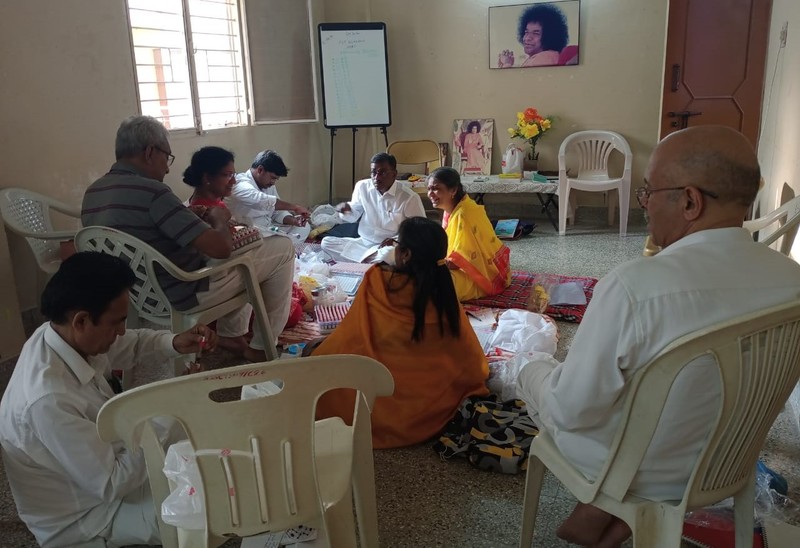
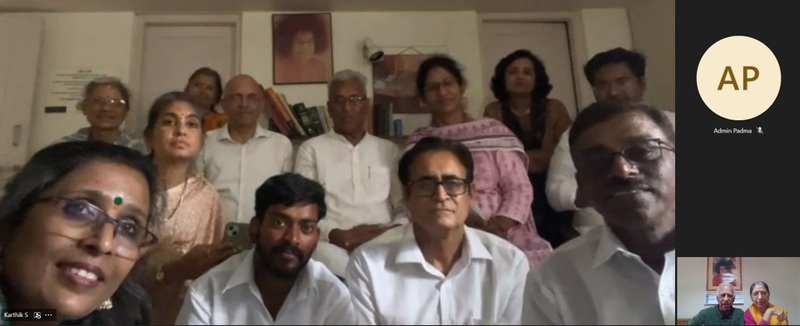
4. Inauguration of the head office of SVIRT, 29 April 2023
This was a landmark day for Sai Vibrionics when the office of SVIRT was inaugurated with a traditional puja interspersed with Sai bhajans. It was a team effort by the governing body of SVIRT, local practitioners and participants of the April AVP workshop, to prepare and organise the office premises during the preceding several days in readiness for the auspicious ceremony. The program started vibrantly at the designated time of 8.35 am with the priest reciting vedic mantras. Ceremonial pujas were performed to Lord Ganesh, Navagrahas and Goddess Lakshmi along with Dwara puja with Gruha pravesam (a Hindu ceremony held to ward off evil spirits and negative energy and usher in positivity). Shirdi Sai abhishekam by a Governor 02696 and his wife, was followed by Sai Ashtothram namavali and Sai Gayathri recitation. The program concluded with Aarti to Swami followed by distribution of divine prasadam and a simple traditional meal. The function was well attended by many practitioners, some virtually. The founders were delighted to participate in the ceremony via Teams.

5. In Memoriam
We are sad to announce the loss of our French Practitioner Marie-Christine Philippi 03558 on 4 March 2023; she was 76. A beautiful person, loving and generous, with great faith in Baba, she soldiered on treating her patients despite enduring pancreatic cancer for two years, even uploading her monthly reports until her final days. Working as a medical secretary in her psychiatrist husband's office, she helped many patients with vibrionics in their healing process. To relieve the suffering of others with deep compassion was her creed and her constant concern. During her last few months, she reported being always with Baba and said that she had never before experienced such happiness!
May she rest in the serene lap of her Divine mother Sai.
